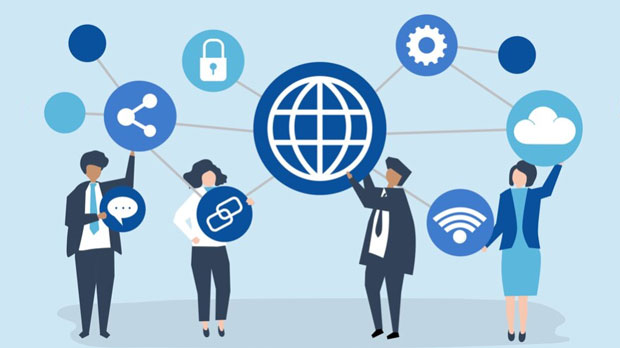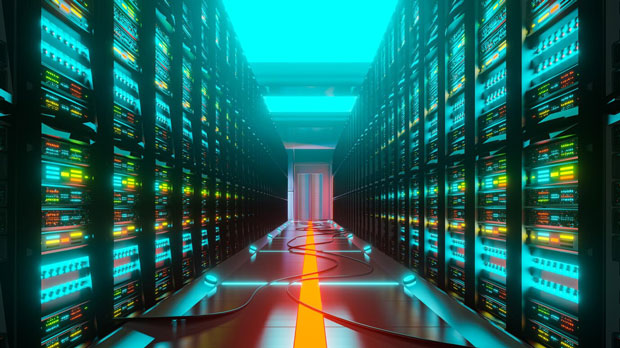In recent years, with the rapid growth of internet applications, the abuse of proxy ip addresses has become a significant issue in digital security. proxy ips are often used to disguise the origin of online activities, making it difficult to track malicious behaviors such as fraud, bot attacks, and cybercrimes. Traditional methods of identifying and preventing abuse through IP analysis and centralized databases have limitations in terms of transparency, reliability, and scalability. Blockchain technology, known for its decentralized nature and immutability, offers promising solutions for solving the problem of proxy IP traceability and preventing abuse. This article explores the potential applications of blockchain in improving the traceability of proxy IPs and providing more effective countermeasures against their misuse. Understanding Proxy IPs and the Problem of AbuseA proxy IP is an intermediary server that acts as a gateway between a user's device and the internet. It allows users to hide their real IP addresses, providing anonymity and bypassing geographical restrictions. However, the same feature that offers privacy also becomes a tool for abuse. Proxy IPs are frequently used by malicious actors to engage in fraudulent activities such as identity theft, account takeovers, spamming, and other forms of cybercrime. Additionally, bots often leverage proxy IPs to carry out large-scale attacks like DDoS (Distributed Denial of Service) or scraping data from websites without permission.Traditional methods of identifying and mitigating abuse are based on centralized systems, which store information about IP addresses and user activities. While these systems can block suspicious IPs, they are vulnerable to manipulation, spoofing, and do not always provide a clear trace of the origin of malicious activity. Furthermore, the growing sophistication of cyber threats makes it harder to detect and prevent the misuse of proxy IPs using conventional techniques.How Blockchain Can Enhance Proxy IP TraceabilityBlockchain technology, due to its decentralized and transparent nature, offers a unique opportunity to address the challenges of proxy IP traceability. In a blockchain-based system, each transaction or activity is recorded on an immutable ledger, which is distributed across multiple nodes (computers) in the network. This ensures that once data is written, it cannot be altered or deleted, creating a permanent and verifiable record of activities.By leveraging blockchain for IP traceability, it is possible to create a transparent and secure database of IP addresses. Each time an IP is used in a proxy activity, the transaction can be recorded on the blockchain, linking it to the time, location, and other relevant metadata. This provides a clear and tamper-proof history of the proxy IP’s use, making it easier to identify malicious activities associated with specific addresses. For example, when a user connects through a proxy, the blockchain can register the transaction along with a unique digital signature, ensuring that the IP address and its associated actions can be traced back to the original source. This is particularly useful for identifying patterns of abuse and preventing repeat offenders from using the same or new proxies to commit crimes.Decentralization and the Prevention of IP SpoofingOne of the main advantages of blockchain in proxy IP traceability is its decentralized architecture. Unlike traditional centralized systems, where a single authority controls the data, blockchain is distributed across multiple nodes. This makes it significantly harder for attackers to manipulate or spoof their IP addresses. In a centralized system, attackers could potentially alter their IP information or hide behind a series of proxies. However, in a blockchain system, any attempt to alter the record would require consensus across the network, making it extremely difficult to change the history of IP addresses and activities.Moreover, blockchain's use of cryptographic techniques ensures that data integrity is maintained. Each transaction is securely hashed and linked to the previous one, creating a chain of records that is virtually impossible to tamper with. This level of security is especially important in the context of preventing fraud and ensuring that the proxy IPs in use are legitimate and traceable.Smart Contracts for Automated Abuse Detection and PreventionAnother powerful feature of blockchain technology is smart contracts. These are self-executing contracts where the terms of the agreement are written directly into code. Smart contracts can be used to automatically enforce rules and trigger actions when certain conditions are met. In the context of proxy IP abuse prevention, smart contracts can be programmed to detect suspicious behaviors and take immediate action, such as blocking an IP address or triggering an investigation.For example, if a proxy IP is used for activities that match known patterns of abuse, such as rapid requests from multiple accounts or unusual spikes in traffic, the smart contract could automatically flag the IP address and prevent further actions from that address until it is verified. This automated process reduces the need for manual intervention, allowing for faster detection and mitigation of abuse.Improved Accountability and Trust Through Blockchain’s TransparencyBlockchain's transparency is another critical aspect that enhances accountability in proxy IP traceability. Since all transactions are recorded on a public ledger, anyone can access and verify the data. This transparency builds trust among users, regulators, and service providers. In the context of proxy IP abuse, stakeholders such as website owners, advertisers, and law enforcement agencies can use the blockchain ledger to track the origin of suspicious activities and ensure that appropriate actions are taken.By providing a transparent record of proxy IP usage, blockchain allows businesses and organizations to identify the source of attacks more effectively, making it easier to prosecute malicious actors and prevent further harm. Additionally, users who rely on proxy services can be assured that their activities are being monitored in a secure and transparent environment, reducing the likelihood of misuse.Challenges and Future ProspectsWhile blockchain offers numerous benefits for proxy IP traceability and abuse prevention, there are challenges that must be addressed. One major issue is scalability, as blockchain networks need to process large volumes of data in real time. This could be a concern when dealing with high-traffic applications or large-scale abuse prevention systems. However, ongoing advancements in blockchain technology, such as the development of faster consensus algorithms and layer-2 solutions, are likely to address these challenges.Another challenge is user privacy. While blockchain can improve traceability and transparency, it is important to strike a balance between security and privacy. Users may be concerned about the exposure of their activities on a public ledger. Privacy-focused blockchain solutions, such as zero-knowledge proofs, could offer a way to address these concerns while maintaining the benefits of traceability.Blockchain technology has the potential to revolutionize the way we handle proxy IP traceability and prevent abuse. Its decentralized nature, immutability, and transparency make it a powerful tool for tracking and preventing malicious activities associated with proxy IPs. By integrating blockchain with existing abuse prevention systems, businesses and organizations can create more secure, transparent, and automated solutions for detecting and mitigating fraud, cyberattacks, and other forms of abuse. As blockchain technology continues to evolve, its applications in digital security will only expand, offering more effective and reliable solutions to the growing challenges of internet security.
Jun 03, 2025





















































